BY DR. ABHIJIT MHALANK, M.D Ayurveda from Mayur Tulum
Have you seen advertisements of Ayurveda massages with enticing photos? Some people even believe that massage is the only treatment that Ayurveda can offer. Of course that’s not true. Massage is one of the many ways offered by Ayurveda to treat diseases. However, massages are the most pleasant and popular part of Ayurvedic treatment. There is specific logic behind the concept of massage and that logic reflects deep understanding of human anatomy and physiology that ancient Ayurveda experts had possessed. In this article we will understand everything you need to know about Ayurveda and Ayurvedic massage.
What is Ayurveda?
Ayurveda is the world’s oldest health science developed by the sages of India. Ayurveda texts date back to more than 5000 years and the practice of Ayurveda has been around for even longer. Ayurveda has eight different branches referred to as “Ashtanga” that focus on internal medicine, surgery, treatment of ENT and ophthalmic diseases, obstetric, gynaecological and paediatric diseases, toxicology, rejuvenation, sexual diseases, and mental health. Due to its holistic approach to physical and mental wellbeing, focus on identifying and curing root cause of a disease, and using herbal medication with no side effects, Ayurveda is now gaining immense popularity in the west.
What is the logic behind Ayurveda Massage?
If we want to wash a dirty dress, what we do? We first apply some soap or detergent on the dress, then rub it with a brush and if necessary soak it in hot water. These steps remove the dirt and clean up the dress. Detergent loosens the dust particles, brush detaches them from dress while hot water removes them completely. For thousands of years, Ayurveda sages in India applied the same logic for cleaning up the body and used two actions:
Oleation – means applying an oily substance like oil. This process loosens up the body toxins just as detergent does to dirt.
Fomentation – means sweating procedures. They liquefy loosened up toxins and open up the skin pores to throw them out.
Combination of these two principles detoxes the whole body and cleans up every organ.
What is massage?
When skin is rubbed in a rhythmic manner by specific movements of hands or feet, then it is called massage. Generally some medicinal substance is applied on skin before giving a massage. This substance facilitates smoother massage movements and medicinal ingredients of this substance manage to enter the body through skin pores when body is massaged. Back in the days there were no injections or intravenous drips. The only way to administer medicine was oral route. So Ayurveda experts observed that skin is the largest organ of body and medicines can directly reach the tissues through the skin bypassing digestive system if applied in a specific way. Therefore they developed the art & technique of massages which not only transport medicines but also convey feelings and energies to other person. By using appropriate material, massages can be effectively used to treat numerous different diseases.
When an oil is applied during massage, it becomes an oleation treatment which can loosen up body toxins. That’s why in Ayurveda, massages are often used during preparation phase of the popular detox and purification treatment known as Panchkarma.
Who can or cannot get an Ayurvedic massage?
Anyone including children, pregnant women and elderly people can get an Ayurvedic massage. However, individuals suffering from fever, diarrhoea, vomiting, jaundice, ascites, injuries, bone fractures and toxaemia are not given any Ayurvedic massage. Ayurvedic massage is also not recommended for women during menstruation cycle.
What are various types of Ayurvedic massages?
Depending upon style and material used, Ayurvedic massages are of different types. Their therapeutic effects also differ accordingly. Here are few main types:
Abhyanga massage:

In this massage, warm oil is applied on person’s body and head and then they are massaged with hands. Appropriate pressure is applied wherever necessary.
The oil is selected after taking into account person’s current health status. For different ailments there are different oils available in Ayurveda.
Abhyanga massage has positive effects on body as well as mind of recipient. It is recommended in many skin diseases, joint diseases, neurological diseases, muscle pains, headaches as well as in diseases of bones & spine. Abhyanga is also good against sleep disorders and numerous mental problems including depression.
Abhyanga is many times followed by a fomentation treatment in a steam box.
When only head is massaged, the therapy is called Shiro-abhyanga.
If instead of hands, masseur uses his feet for giving massage, then the therapy is called Padanghat. It is a stronger variety of massage. Men with robust figures and strong musculature such as body builders and wrestlers are given this type of massage.
Pottali Massage:
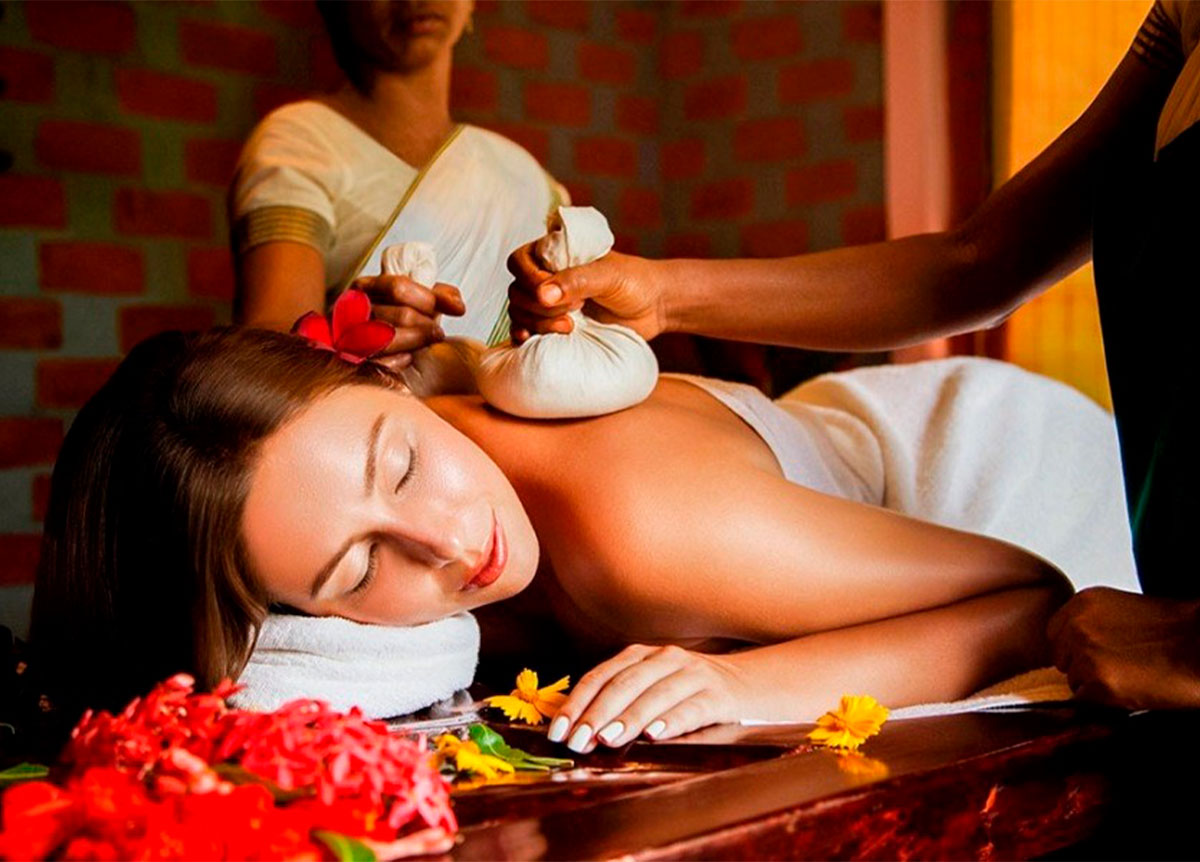
Pottali means bag or sack. This massage is done by using small sacks, that’s why it is called Pottali massage. These sacks contain medicinal material like leaves or powers of medicinal herbs or medicinal rice. Sacks are made out of clean piece of cloth and then filled with right material chosen after taking into account individual’s health condition. Size of sack is such that masseur can hold it easily in his hand. At least two sacks are used for every massage. Once the sacks are ready, medicinal oil is heated in a pot. The sacks are dipped in the oil for few minutes until they become warm. Then they are lifted from the oil and put on patient’s body for massage. When the sack cools down during massage, it is again dipped in the warm oil and used for further massage. Every time new sacks are prepared before massage. Because warm sacks and oil are used in this procedure, this massage gives effects of both oleation as well as fomentation.
Depending upon content of sacks, this massage can be used in diseases of joints, spine, nerves, skin, muscles, ligaments and respiratory system. Conditions caused by emaciation and degeneration can also be improved through this massage.
Kayasek:

This is a very unique variety of massage in which warm oil is poured on patient’s body like a stream. It is followed by gentle massage. This therapy is fine combination of oleation and fomentation in which whole body gets treated by these both principles of treatment. That’s why it is called Kayasek, wherein “Kaya” means body and “sek” means fomentation. This therapy is only for body and not for head. The quantity of oil used in this therapy is far more than any other therapy. Oil temperature is such that it would sweat the patient but won’t burn his skin.
This massage proves very effective in treatment of diseases of joints, spine, nerves, skin, muscles, ligaments and musculoskeletal system. The therapy gives fast effects and makes skin soft & smooth.
Shirodara:
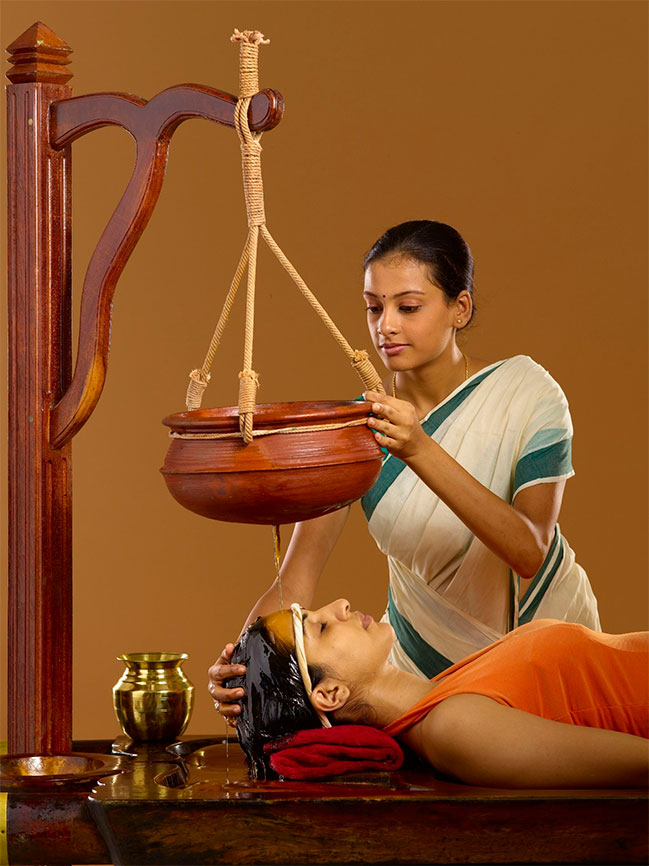
This is a world famous Ayurvedic therapy which is often used in all Ayurveda treatment programmes. Pictures of an individual receiving a shirodhara treatment are commonly in advertisements. The name Shirodhara contains two words, shiro means head and dhara means stream. In this therapy, patient lies on a therapy table. Over his head a vessel is hanged which contains warm oil. During therapy this vessel is oscillated in a uniform speed. The stream of oil falls on patient’s forehead and gives a mesmerizing experience. Like Kayasek therapy, this therapy is also a fine combination of oleation & fomentation. Due to its soothing and transcendental effect the therapy is extremely popular in all sections of society.
Shirodhara is an effective treatment for sleep problems, hair problems, different types of headaches such as migraine, neurological diseases like epilepsy, Alzheimer’s disease and mental disorders like depression & schizophrenia. It also has excellent de-stressing influence. So it is routinely prescribed in stress-induced illnesses.
Things to consider before getting an Ayurveda massage:
While taking any Ayurvedic massage, the recipient should follow certain discipline. Following points are important:
*A person should not take Ayurvedic massage if he has just got exposed to hot sunlight or heavy rain or has made a hectic journey or is yet to recover fully from a febrile disease.
*After taking any Ayurvedic massage, the recipient should take complete rest at least for an hour. Even after that he should not expose himself to hot sunlight, heavy rain, snowfall and storm. He should neither go for swimming nor for a hectic journey.
*An Ayurvedic massage should be preferably taken during day time. Period before sunrise and after sunset should be avoided as far as possible.
*If a recipient wants to combine a vacation with Ayurvedic massage package, then he should first finish his sightseeing and travelling and then start his Ayurvedic massage programme. Doing other way around (massage programme followed by travel) can prove physically daunting.
*If a recipient undergoes a Ayurvedic massage programme during his vacation away from his home, then he should not resume his professional duties on the very next day after arriving home. Making a long air travel immediately after ending an Ayurvedic massage package and resuming professional routine on the very next day after arriving home can prove harmful for health. Ayurvedic massages keep exerting their effects on the individual for next several days. It is therefore desirable to give the body sufficient time to experience the effects and benefits of massages. Exposing the body suddenly with a hectic, stressful routine can destroy the positive effects of Ayurvedic massage. Therefore there should always be a couple of free days between end of Ayurvedic massage programme and resumption of normal routine so that body can gradually adjust with the new routine.
*Pregnant women can take Ayurvedic massages under guidance of a qualified Ayurvedic physician. However, after normal delivery, full body Ayurveda massage is avoided for at least a month. Only local massage on abdomen proves useful for speedy involution of uterus. If the delivery is by scissorean section, then full body massage is not allowed for at least two months until the abdominal wound heals fully. After a miscarriage or abortion, no full body massage is allowed for a month.
*Abhyanga massage is allowed for all age groups of children. Giving massage to babies benefits them in many ways and ensures healthy growth.
*Girls who have had their menarche and women are not given any massage during their menstruation period.
Where can I get an Ayurveda massage in Tulum?
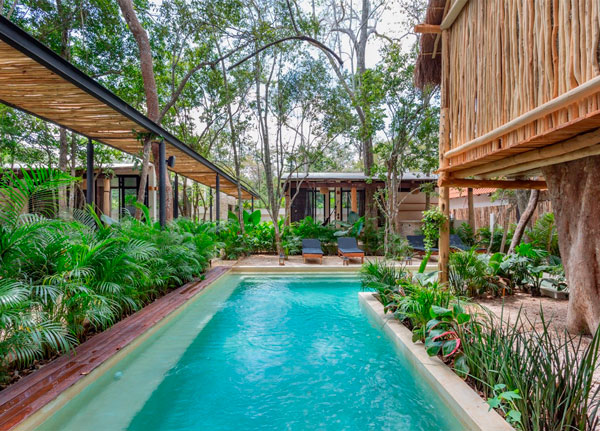
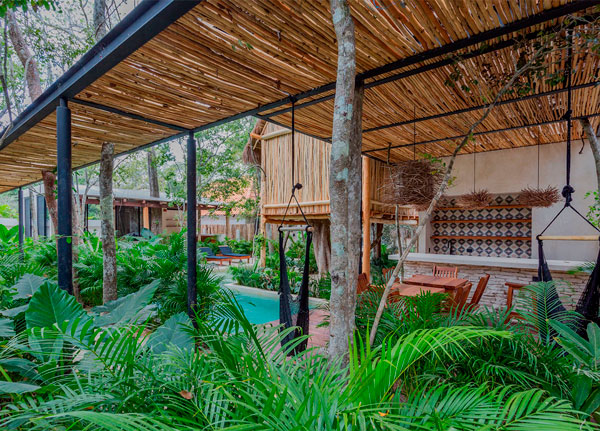
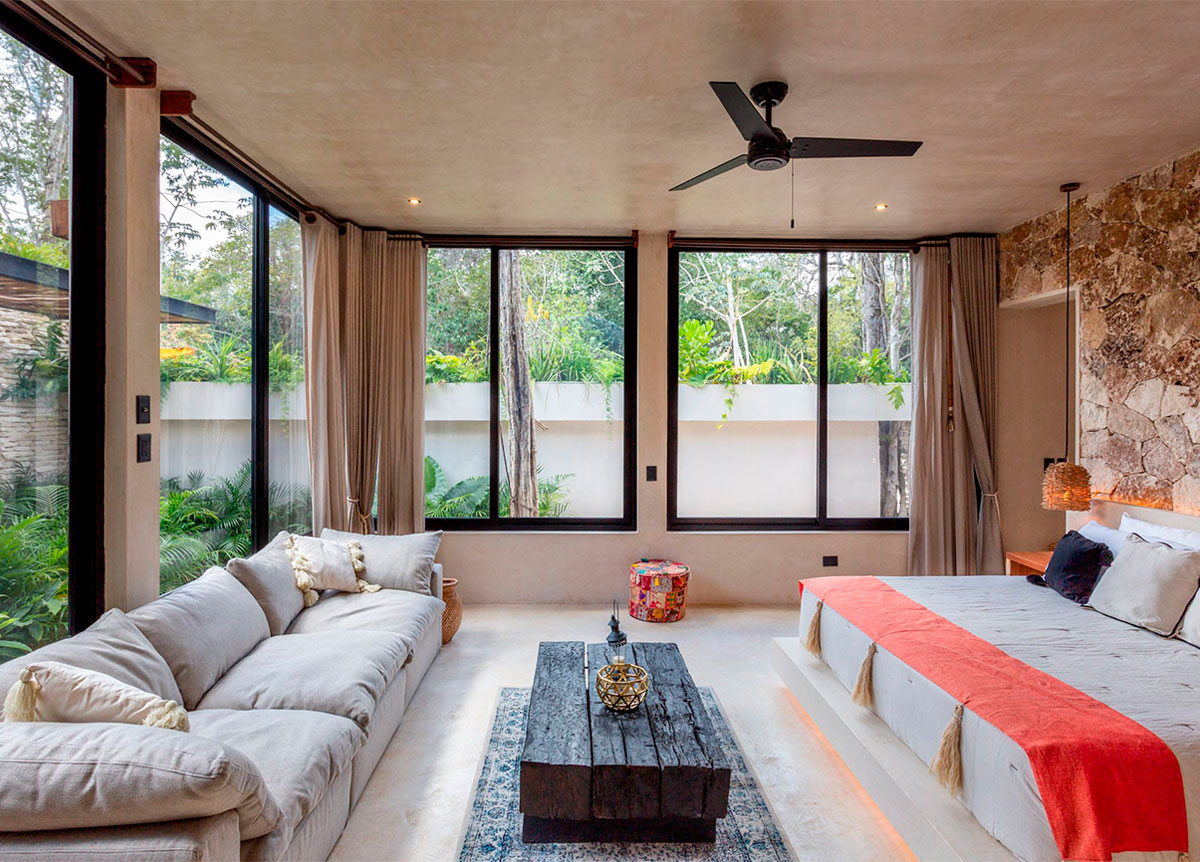
Planning your next wellness retreat? Whether traveling in a group or solo, for business or pleasure, you can book your Ayurveda experience at Mayur – Mexico’s only authentic Ayurveda healing center that offers a full immersion Ayurveda experience and is staffed by qualified Ayurveda physicians, therapists, and chef from India. You can choose between a full body detox program and stay in the beautiful Villas at Mayur or get a day pass if you plan to just drop by for a unique, authentic and relaxing Ayurveda Massage.
Contact Jaunt Mexico to book your bespoke Ayurveda Experience today !!!
References:
